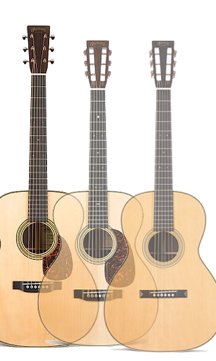Right. If you change the body length along with the neck length, the bridge can stay in the same place, as long as it's correct for the scale length. If you change just the neck length, then you get something like Martin's Norman Blake. Here's a pic I posted awhile ago that might illustrate. From the left, a 000-28 14-fret, Norman Blake 000-28 12-fret, and original-shape 000-28. A 14-fret OM might have helped here.

The location of the waist of the NB with respect to the nut, being the closes of the three, has prompted me to build a NB-type body because of my left shoulder condition.
I wonder if the "sweet spot" idea comes from the fact that most 12-fret guitars have more soundboard between the bridge and the soundhole.
When Martin went from the 12-fret to the first 14-fret OM, they made the neck longer and squashed the body, sort of a double cutaway, if you will. I think the first OMs must have looked very strange at first.


